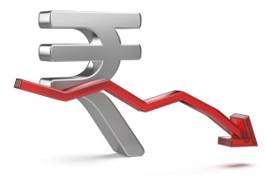
With Fed hiking rates, dollar strengthening and current account deficit deteriorating, RBI should allow currency to adjust.
On Wednesday, the US Federal Reserve stepped up its efforts to tackle inflation, raising interest rates by 75 basis points for the third straight time. The benchmark federal funds rate now stands at 3-3.25 per cent — the highest since the financial crisis of 2008. While the decision is in line with market expectations, the tone of the policy, the projections therein were markedly hawkish. The central bank left no room for ambiguity, stating emphatically that it “is strongly committed to returning inflation to its 2 per cent objective”. The Fed dot plot — a chart that plots the projection of each the Fed official of the central bank’s short term rate — indicates that the benchmark rate will rise to 4.4 per cent by the end of this year. This signals another rate hike of at least 75 basis points when the Federal Open Market Committee (FOMC) meets next in November, followed by another hike, though possibly of a slightly lower magnitude in December. With rates expected to rise further to 4.6 per cent in 2023, this revised likely trajectory of the interest rates also douses expectations of the Fed either holding or lowering rates next year.
The “pain” that will be induced to bring US inflation down is likely to be significant. As per the projections accompanying the policy, economic growth has now been pegged at 0.2 per cent this year, significantly lower than the earlier assessment of 1.7 per cent. Alongside, the Fed has upped its estimate of the unemployment rate, expecting it to rise to 3.8 per cent this year, and further to 4.4 per cent next year. As Jerome Powell, chairman of the Federal Reserve, noted, “I wish there was a painless way to do that. There isnt”. This pain will be felt across sectors, across asset classes, across the world.
With the US dollar hitting a fresh 20 year high — the dollar index is hovering around 111 — there is pressure on other currencies. The Euro is at around multi-decadal lows, and currencies of emerging market economies are also under pressure to depreciate. The Indian rupee also weakened sharply against the dollar, crossing the psychological mark of 80 — on Thursday, it closed at a record low of 80.86 against the dollar, down from 79.975 in the previous session. So far, the RBI has been drawing down its foreign exchange reserves, intervening actively in the currency markets. But, considering the strengthening of the dollar, a deteriorating current account deficit, the RBI should limit its interventions, allow the currency to adjust.



